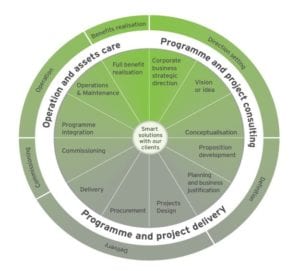All municipalities in South Africa have to manage large portfolios of infrastructure assets. The optimisation of service levels, risk and expenditure for all assets over the entire asset lifecycle, within ever-present budgetary constraints, presents a unique challenge for these organisations.
Drakenstein Municipality is the largest local government in the Western Cape Province of South Africa after the City of Cape Town. It delivers infrastructure support services to more than 260 000 people with an infrastructure asset portfolio comprising more than 32 000 individual infrastructure assets.
The municipality’s capital budget is typically in the order of 6% of the replacement value of the infrastructure and this amount must cover both the renewal of existing assets, as well as network expansions necessary to provide and improve services to customers. The asset managers at Drakenstein Municipality therefore face a significant challenge in apportioning the limited capital budget so as to maximise service delivery whilst maintaining asset condition and minimising the risk of asset failures.
The solution developed by Drakenstein Municipality is based upon asset portfolio optimisation models typically used to plan renewal programmes for road networks. This approach was extended to cover all of the other infrastructure categories typically managed by them.
This has enabled the Drakenstein Municipality to optimise the performance of the entire asset portfolio, within specific risk and budgetary regimes. The model uses a sophisticated risk model which considers the social, environmental and economic risks associated with infrastructure services to prioritise capital renewal interventions.




